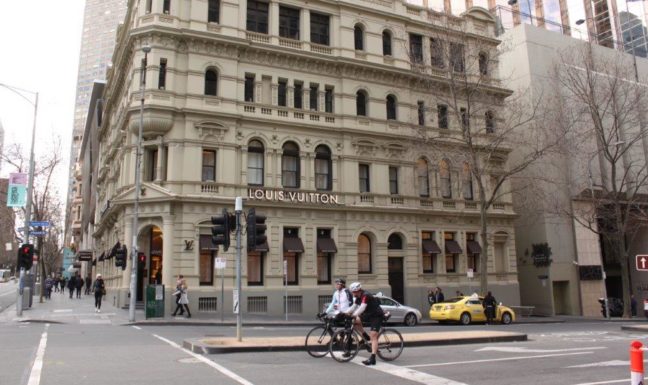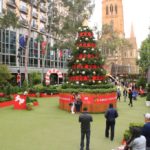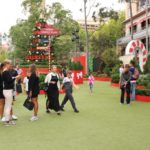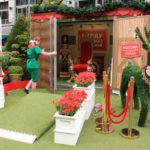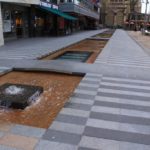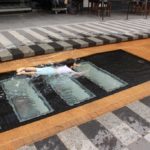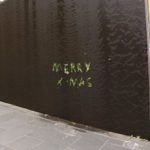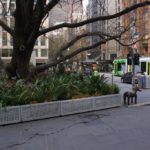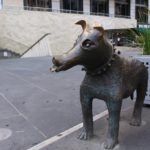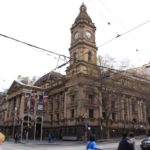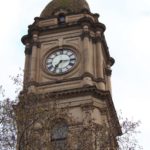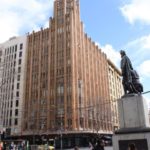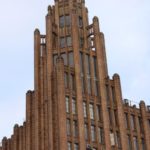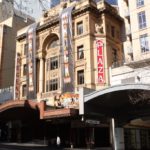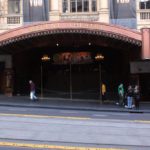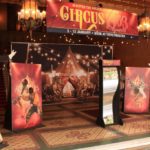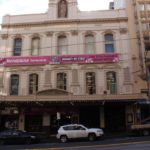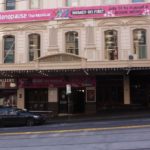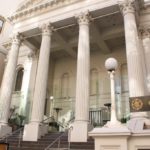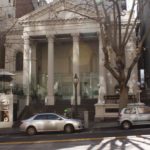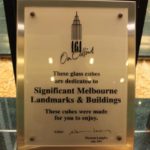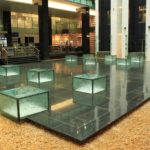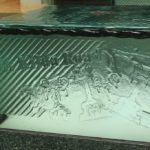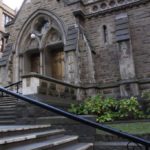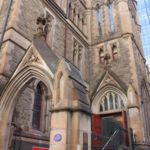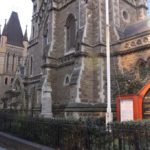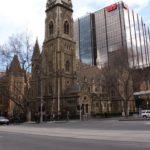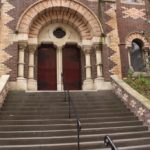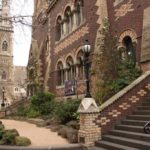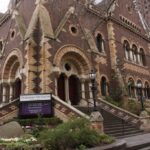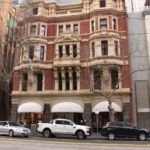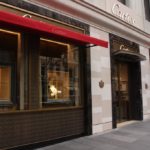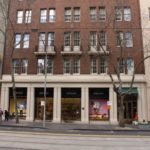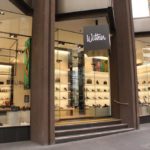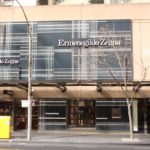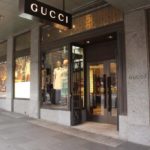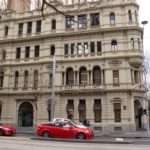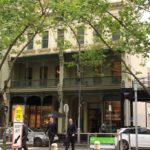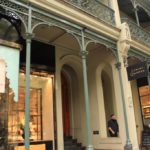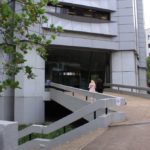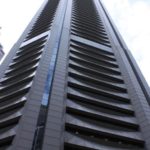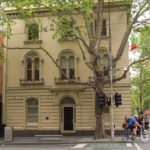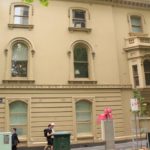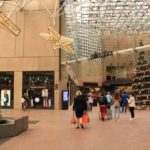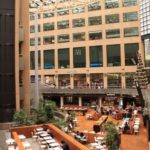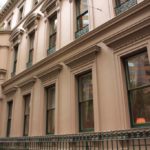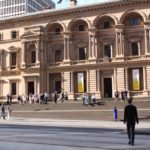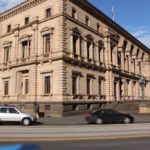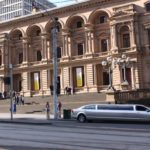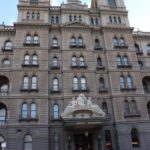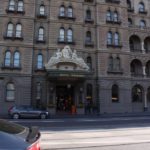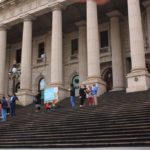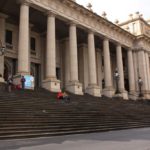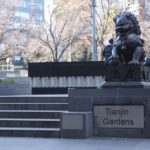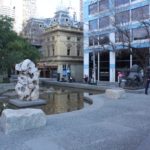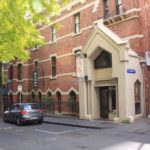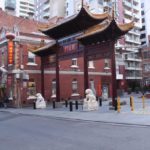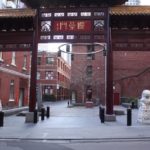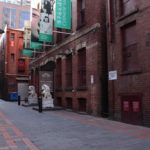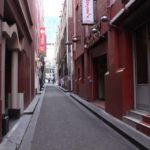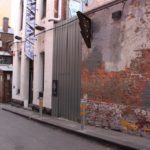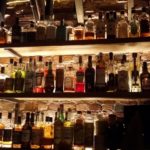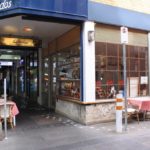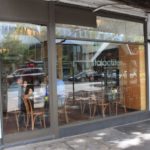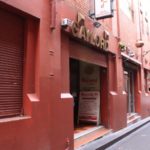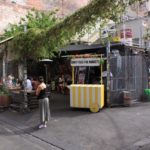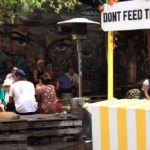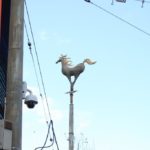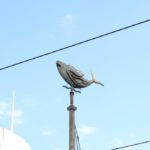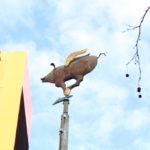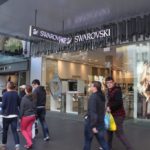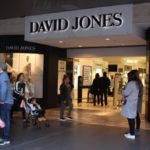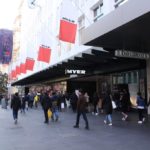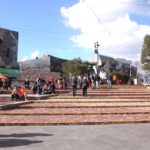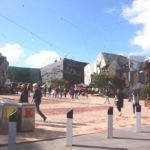The Cosmopolitan
This walk tour covers a mixture of old and new. The walk tour will take you through the glamorous part of Collins Street, which is also notoriously called the “Paris End” of Collins Street, the Chinatown, and wander through some historical sites.
 Pick up a copy of the The Cosmopolitan walk tour number five from the Melbourne Visitor Booth in the Bourke Street Mall or Federation Square.
Pick up a copy of the The Cosmopolitan walk tour number five from the Melbourne Visitor Booth in the Bourke Street Mall or Federation Square.
The map inside the brochure is very comprehensive and easy to follow.
You can also download a pdf copy here.
We’ll show you want you can expect to see along this walk tour.
Let’s get going.
St Paul’s Cathedral
The walk starts from Federation Square. Right across Flinders Street is the St Paul’s Cathedral.

St Paul’s Cathedral is an iconic landmark, which you can’t miss.
The cathedral was built in stages starting from 1880 and finally completely fully in 1931.
The cathedral is opened daily.
Check the opening hours here.
1. Matthew Flinders
By the side of the cathedral you will find the monument of Matthew Flinders. Not a pretty sight when Matthew is covered with birds droppings.

2. Burke and Wills
Walk further down Swanston Street, at the junction is the Burke and Wills monument.
The monument of Burke and Wills was Melbourne’s first public monument. It was dedicated to their fatal expedition to cross Australia from Melbourne in the south, to Gulf Carpentaria in the north.

City Square
Besides the Burke and Wills monument is the City Square. The City Square is used for different festival and events through out the year.
Below was Christmas in City Square.
There is a long linear water feature on the inner side of City Square and during summer you can see children playing in the water.
There is also a water wall known as the John Mockridge Fountain on the north side of the square. A favourite place for young people trying to “write” messages on the fountain wall with fallen dried leaves.
Don’t forget to look out for the cast bronze statue of a small dog named Larry La Trobe. Every onlookers love to touch Larry’s ears causing both ear lobes to be well polished.
3. Melbourne Town Hall
Just opposite the City Square is the Melbourne Town Hall.
The grand interior of the town hall had played host to The Beatles and Abba.
Today, Melbourne Town Hall is a very popular venue for weddings, theatrical performances, school concerts, corporate functions and exhibitions.
4. Manchester Unity Building
Another iconic building of Melbourne is the Manchester Unity Building, which is located opposite the Melbourne Town Hall.
The building has twelve levels, which houses a combination of offices, residential and retail spaces.
5. Regent Theatre
Turn right on Collins and walk uphill towards the “Paris End” of Collins Street. The Reagent Theatre is just a few steps away.
The Regent Theatre has a seating capacity of 2,143 and is listed on the Victorian Heritage Register.
6. Melbourne Athenaeum
Across Collins Street, is the Melbourne Athenaeum.
Melbourne Athenaeum is a public institutions founded in 1839. The building includes a main theatre, a small studio theatre and a subscription library.
The building is now declared a historical building and is listed on the Victorian Heritage Register.
Further down Collins Street, not listed in the brochure, is a magnificent building with a classical Roman temple facade is the Collins Street Baptist Church.
Its four Corinthian columns is greatly different from the traditional gothic style of many Melbourne’s churches.
7. No. 161 On Collins
This 1928 building, on the corner of Russell St, is listed by the National Trust for being historically significant as one of Melbourne’s first large volume office buildings.
Enter the building and see the glass sculptures in the atrium. These glass sculptures represent significant landmarks and buildings of Melbourne.
8. Scots Church
The Scots Church is located at the corner of Collins Street and Russell Street.
It is a Presbyterian church and it was built in 1841.
The design of the church is of neo-gothic style and built with Barrabool freestone and Kakabui stone.
9. St Michael’s Uniting Church
Just opposite the Scots Church is the St Michael’s Uniting Church. The church was also designed by Joseph Reed.
The church design is of the Lombardic architectural style covered with multi-coloured exterior brickwork.
10. No. 101 Collins Street

This 57-storey building is one of the most prestigious and expensive office tower in Melbourne.
The four granite columns decorate the entrance of the building.
The foyer is even more impressive with elegant artwork and classic architecture.
Paris End
The ‘Paris End’ of Collins Street is notably Melbourne’s best known street with some of the country’s finest Victorian era buildings.
The classy boulevard is lined with grand heritage structures that house high-end jewellery, five-star hotels, fashion accessories and luxury goods and private clubs.
11. Townhouses
Towards the junction of Collins Street and Exhibition Street are several townhouses that still stand today.
12. Nauru House
Nauru House was owned by Republic of Nauru when it was first built but now it has been bought over by QIC. The 52 storey building was completed in 1977 and was the tallest building during that time. However, it was quickly overtaken by others.
13. Boutiques
At the corner of Collins Street and Exhibition Street is a heritage building, which was used by Dr. John Wilkins as his residence and consulting rooms.
The building is of significant architectural heritage and is now Victorian Heritage registered. Notice the renaissance revival style detailing around the building.
14. Collins Place
Further down Collins Street is Collins Place and also where Hotel Sofitel is located. In the atrium are fabulous cafés and high end fashion shops.
15. Melbourne Club
Opposite the Collins Place is the Melbourne Club. This private social club was established in 1838, which started as a gathering of 23 gentlemen.
16. Old Treasury Museum
At the end of Collins Street is the Old Treasury Building.
The Old Treasury building was constructed between 1858 and 1862 during the gold rush era to store the colony’s gold.
Today you can see the original gold vaults where gold bullion was stored.
There are three permanent exhibitions in the Old Treasury Museum. They are ‘Built on Gold’, ‘Victorian Archival Treasures’ and ‘Growing Up in the Old Treasury’.
The Old Treasury Building is also host to all Victorian Marriage Registry weddings. It offers wedding couples the choice of two ceremony rooms.
17. Hotel Windsor
Continue on Spring Street, you will come to Hotel Windsor, which is one of the oldest hotel dating back to the 1880s.
18. Parliament House
Across of Hotel Windsor is the Parliament House. The Parliament started meeting at the Parliament House since 1856. However, between 1901 and 1927, the parliament House was used by the Federal Parliament and the Parliament of Victoria sat at the Royal Exhibition Building.
19. Princess Theatre
Diagonally across of the Parliament House is the Princess Theatre. The Princess Theatre was constructed in 1886.
The most notable story of the theatre is the ghost of Frederick Baker. In 1888, Frederick died of a heart attack at the end of the opera but never came back on stage to take the bow. However, the other members of the opera claimed that they saw him taking bows with them.

20. Tianjin Garden
At the end of the Princess Theatre is Little Bourke Street, which is the beginning of China Town. At the corner, across of Little Bourke Street, is a small Chinese Garden known as Tianjin Garden.
Tianjin Garden was built as a symbol of Melbourne’s close relationship with its twin city, Tianjin, China.
21. Gordon Place
Right at the beginning of Little Burke Street is the Gordon House. It was built as a guest house in 1883. It is now a boutique hotel and is listed on the Victorian Heritage Register.
22. Her Majesty’s Theatre
At the junction of Exhibition Street and Little Burke Street is Her Majesty’s Theatre.
This 1,700 seats theatre was built in 1886.
Check the latest musical play there on their web site.

24. Chinatown Arch
Just next to Her Majesty’s Theatre is the Chinatown Arch, which usher to the Chinatown of Melbourne.

24. Facing Heaven Archway
As you walk further down into Chinatown, you will come across another arch. This is the ‘Facing Heaven Archway.’ The archway was a gift from Jiangsu Provinces and the arch is a replica of the Lingxing Gate in Nanjing, which is the capital of Jiangsu Province.
25. Chinese Museum
Walk past the Facing Heaven Archway, you will come to the Chinese Museum at Cohen Place.
The museum has five floors of exhibits to showcase the Australian-Chinese heritage dating back to the gold rush era of the 1850s.
Check out what’s on at the museum here.
26. Heffernan Lane
Continue down Little Burke Street and cross Russell Street. A short distance away is the Heffernan Lane junction.
In 1889, there was an engine house at the end of Heffernan Lane (towards Lonsdale Street) but was closed down due to complaints from residents about the smoke it emitted.
On this lane you will fine Union Electric bar. One of the popular bars in Melbourne’s laneways.
27. Methodist Mission
At the beginning of Heffernan Lane on Little Burke Street is a tiny Methodist church, which was built by Wesleyan Methodists in 1872.
Look out for the sign, ‘Commit No Nuisance.’ Graffiti is very common on this lane and hence the sign is very appropriate.

28. Tattersall’s Lane
At the end of Heffernan Lane, turn left on Lonsdale Street. Lonsdale Street is the largest congregation of Greeks restaurants and cafés.
At the first junction, turn left into Tattersall’s Lane. It was named after Tattersalls Hotel and Tattersalls Club during the 1850s.
There are a mixture of restaurant and bars located on this lane.
The most prominent one is Section 8, which is Melbourne’s permanent pop-up bar furnished with boxes and wooden pallets.
29. Weathervanes
At the junction of Swantston Street and Little Bourke Street, turn left into Swanston Street. At Bourke Street junction, look up to the four Weathervanes.
The weathervanes are the work of Daniel Jenkins, who is a jeweller and silversmith by trade and he learned this technique of making weathervanes while visiting Venice on a Palladio Foundation scholarship.
The four weathervanes takes the shape of an animal, which are a bird, horse, fish and pig.
30. Three Businessmen
At one of the street corner, is the sculpture ‘Three Businessmen Who Brought Their Own Lunch.’ The life-size sculpture was a gift from the Republic of Nauru to City of Melbourne to celebrate the city’s 150th anniversary.

31. Bourke Street Mall
You are now at the shopping heart of Melbourne, Bourke Street Mall.
32-37, Royal Arcade, Block Place, Block Arcade, Centre Way, Centre Place and Degraves Street
At the middle of Bourke Street Mall is the entrance to Royal Arcade. Walk through the Royal Arcade and exit on Little Collins Street. Walk through Block Place and Block Arcade. On Collins Street, walk through Centre Way, Centre Place and Degraves Street.
Unfortunately, this walk tour does not elaborate much on Royal Arcade, Block Place, Block Arcade, Centre Way, Centre Place and Degraves Street.
If you like more pictures on these places, please refer to walk tour No.4 , ‘Lane and Arcades’ here.
38. Federation Square
Now you are back at Federation Square.
We hope you have enjoyed the tour. Please take a moment to leave us a positive comment below and share us on your favourite social media.
Thank you.
